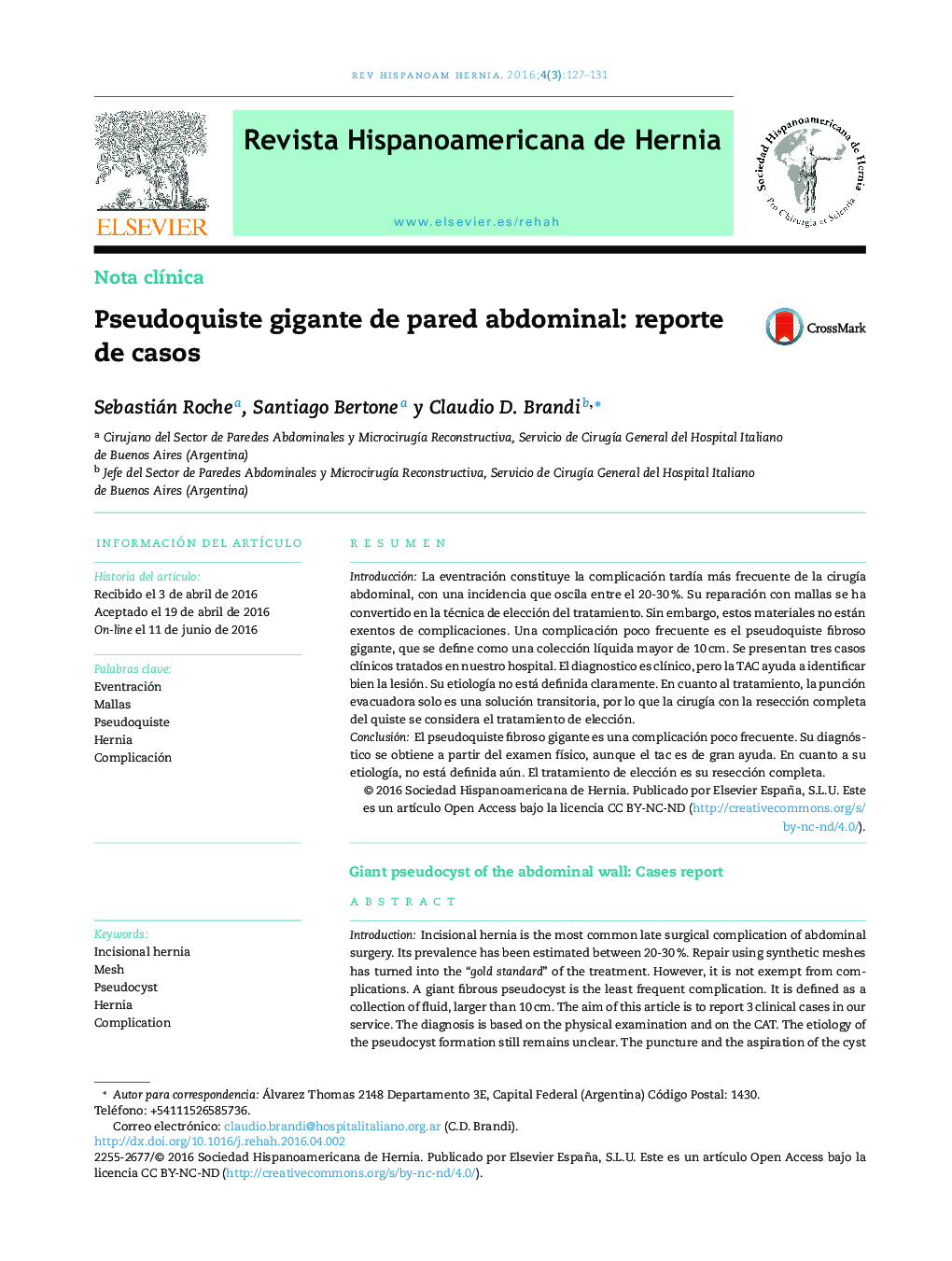| Article ID | Journal | Published Year | Pages | File Type |
|---|---|---|---|---|
| 4306030 | Revista Hispanoamericana de Hernia | 2016 | 5 Pages |
ResumenIntroducciónLa eventración constituye la complicación tardía más frecuente de la cirugía abdominal, con una incidencia que oscila entre el 20-30 %. Su reparación con mallas se ha convertido en la técnica de elección del tratamiento. Sin embargo, estos materiales no están exentos de complicaciones. Una complicación poco frecuente es el pseudoquiste fibroso gigante, que se define como una colección líquida mayor de 10 cm. Se presentan tres casos clínicos tratados en nuestro hospital. El diagnostico es clínico, pero la TAC ayuda a identificar bien la lesión. Su etiología no está definida claramente. En cuanto al tratamiento, la punción evacuadora solo es una solución transitoria, por lo que la cirugía con la resección completa del quiste se considera el tratamiento de elección.ConclusiónEl pseudoquiste fibroso gigante es una complicación poco frecuente. Su diagnóstico se obtiene a partir del examen físico, aunque el tac es de gran ayuda. En cuanto a su etiología, no está definida aún. El tratamiento de elección es su resección completa.
IntroductionIncisional hernia is the most common late surgical complication of abdominal surgery. Its prevalence has been estimated between 20-30 %. Repair using synthetic meshes has turned into the “gold standard” of the treatment. However, it is not exempt from complications. A giant fibrous pseudocyst is the least frequent complication. It is defined as a collection of fluid, larger than 10 cm. The aim of this article is to report 3 clinical cases in our service. The diagnosis is based on the physical examination and on the CAT. The etiology of the pseudocyst formation still remains unclear. The puncture and the aspiration of the cyst enables only a temporary treatment. Thus, we consider that the complete resection of the cyst is the only effective treatment.ConclusionA giant fibrous pseudocyst is the least frequent complication. The diagnosis is based on the physical examination and on the CAT. The etiology of the pseudocyst formation still remains unclear. The definite treatment is the complete excision of the cyst.
